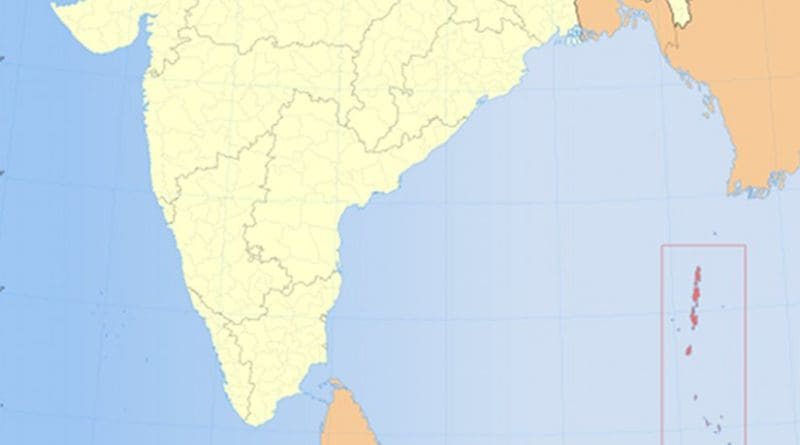Train To ‘Kala Paani’ – OpEd
By Cecil Victor*
Building a railway line between Port Blair and Diglipur in the Andaman group of islands in the southern Bay of Bengal?
Check the ground beneath your feet. It shakes every so often. How can we forget what happened in 2004 when the earth shook at 9 on the Richter scale and there have been lesser shakes in 2012 and 2016. The 2004 earthquake off Sumatra caused waves as high as 30 metres (100 feet) that travelled at a speed of 800 kmph across the Indian Ocean. Along the way, they swept away a whole trainload of travellers in Sri Lanka in what is said to be the single railway accident in which the largest number of people perished.
And then there was the nuclear devastation caused by a tsunami in Fukushima in Japan in 2011.
The Indo-Pacific region is sitting on an earthquake-prone seascape where subterranean tectonic plates are in constant convulsive movement. That is why we need to be particularly careful when creating national assets that could become vulnerable to these forces. Haven’t we learned anything from the complete demolition of the Indian Air Force station on Car Nicobar Island on the southern tip of the group in 2004?
To add gravitas to the proposed rail link it has been suggested that it has great “strategic” value by Diglipur being just 300 km from the Myanmar coastline (from where the Chinese are expected to make a multi-pronged intervention into the Indian Ocean region).
Undoubtedly, it would be a major achievement if the Chinese did capture the Andaman and Nicobar Islands and established a military base off the Indian peninsula. But will a railway line prevent it from happening? The defence of the island territories does not lie in the islands but in a forward deployment along the littoral in this region. That means patrolling, reconnaissance of air, surface and sub-surface threats and finally the ability to nip the mischief at the point of takeoff from anywhere in Bangladesh, Myanmar, Thailand or Indonesia.
Clearly, the “strategic” label has been appended to bulldoze any objections that may be raised on grounds of ecological degradation of virgin lands.
It is estimated that the line would cost about Rs 2,500 crore and it would run at a loss of as much as 10 per cent of the investment. The local Union Territory government has agreed to contribute to the construction even if it runs at a loss because of the “uniqueness” of the project — which is expected to attract tourists from the mainland and around the littoral. It is the “uniqueness” of the project that is expected to draw the crowds not the natural beauty of the Andaman landscape.
That the project is vulnerable to the threats from the very nature that is sought to be exploited is being ignored. It is true that the 2004 tsunami was about two metres in height at the southern tip of the group in Car Nicobar and had abated to just a little over one metre by the time it reached the Andamans in the north but it did wreak extensive damage to existing infrastructure. This happened because of the speed at which the water was travelling and all the debris that it was carrying.
It is not as if there is no better way to exploit both the uniqueness of the landscape and provide strategic defence to the offshore island territories of the Union of India. The Indian Navy is on the verge of acquiring amphibious or flying boats based on a Japanese design. These flying boats require only a jetty for onshore connectivity. Because of this factor it is a very useful platform for both strategic defence as well as promotion of an island-hopping tourism itinerary that, if properly planned, is replete with great tourism potential.
The strategic worth of flying boats lies in its pre-disaster (or military threat) surveillance/reconnaissance capabilities. For military purposes, the flying boat is the fastest available means of intervention where reconnaissance can lead to immediate intervention by onboard military personnel trained to launch operations in the marine environment. It can keep an eye on aerial threats as well as deploy listening devices to locate submarines well outside Indian maritime areas of interest.
Now that an Indian Ocean tsunami warning system has been set up after the 2004 disaster, standard operating procedures can be set up for flying boats to be used for evacuation before the disaster strikes and for post-disaster relief and rescue after the event.
By exploiting the tourism potential of the flying boats that India is to build under licence from Japan it will improve the viability of the Indo-Japan project through the economy-of-scale yardstick. We will be saving more while improving our defences.
Forget the train to “kala paani”. Take a flying boat instead.
*The author is a senior journalist and security analyst. Comments and suggestions on this article can be sent to [email protected]

